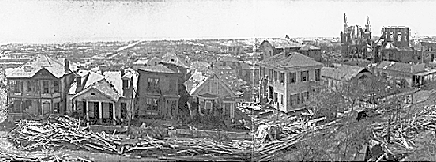Phones, Power and Disasters.
First a little technical history. In years gone by, the telephone system was powered by the local switching station, which had entire rooms full of batteries that were used if the power went out at the substation. They also had huge diesel powered or natural gas powered gensets that would kick in when the power went out to keep the batteries charged. This system was designed in the 1940's and 50's as a function of the national civil defense infrastructure in case the Russians ever decided to try to nuke us back to the stone age. It had three levels of backups to keep the system powered and operational in the event of a disaster of any sort. The only thing that would take down the phone system was physical damage to the lines themselves.
That is no longer the case for a large percentage of the phone system.
After the storm passed Sunday, many of us still had a working phone. We could make and receive calls to our freaked out relatives as long as we had a line powered telephone. But by Sunday evening or Monday morning, nobody who was still without power had a working landline. Why? Because the phone company has made massive changes in the way the infrastructure works over the last 10 years in order to accommodate the much higher bandwidth that customers are demanding and disaster immunity is not and has not been a priority issue. That needs to change.
In order to deliver high bandwidth data and voice systems, the phone company has had to roll out more and more fiberoptics closer and closer to the end users. Now, instead of your dial tone being generated at the local switching office as it used to be, the dial tone is most often generated in big putty colored cabinets called B-52's or local fiber loop cabinets, which are generally only a few thousand feet from your home. These boxes have small battery backup systems and are powered by the power grid, just as your house is, but they do not have a third level of backup. They do not have a standby generator integrated into the system to power them. So when power to the grid is lost, the battery backup is the last and ONLY line of defense to keep the lines functional. The cabinets DO have a connection on the side of them to allow them to be powered by a portable generator, but that means that a technician must carry a portable generator to each and every box, hook it up, fuel it, and start it, and then periodically return to refuel it, and then hope that someone who is more desperate to power their freezer or their A/C system doesn't happen along and take the generator and use it themselves.
The solution is to install a small automated standby power generation systems in the neighborhood of 5KW (about 10HP), preferably powered by a NG line at each loop box. The phone companies will complain that is cost prohibitive, but they are having to do that and much more as it is anyway. Until we demand a more robust design, the Phone companies will continue to give disaster recovery short shrift.










